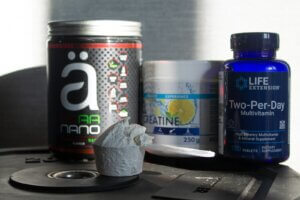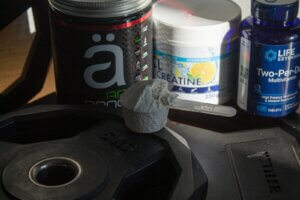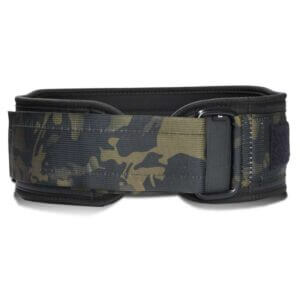How to Sumo Deadlift

Introduction:
The sumo deadlift is a powerful exercise that targets multiple muscle groups, offering a great alternative to the traditional deadlift. It’s a staple in CrossFit and powerlifting routines, known for its ability to build strength and enhance overall fitness. This exercise is particularly beneficial for those who may struggle with the conventional deadlift due to mobility or flexibility limitations. In this guide, we’ll break down the sumo deadlift, providing step-by-step instructions, essential equipment, scaling options, common mistakes, benefits, and similar exercises.
Steps in the Sumo Deadlift movement
Setup:
- Stand with your feet wider than shoulder-width apart and your toes pointing slightly outward.
- Place the barbell on the ground and position it over the middle of your feet.
Grip and Position:
- Bend at the hips and knees to lower your body down, keeping your back straight.
- Grip the barbell with both hands, inside your legs, using an overhand or mixed grip.
- Your arms should be straight, and your shoulders slightly in front of the bar.
Initial Lift:
- Brace your core, take a deep breath, and push through your heels.
- Begin to lift the bar by extending your knees and hips simultaneously, keeping the bar close to your body.
- Maintain a straight back and keep your chest up throughout the movement.
Lockout:
- As you lift the bar past your knees, drive your hips forward to stand fully upright.
- Ensure your shoulders are back, chest is out, and the bar is in line with your hips.
Lowering the Bar:
- Reverse the movement by pushing your hips back first, then bending your knees.
- Lower the bar in a controlled manner, keeping it close to your body until it touches the ground.
- Reset and repeat for the desired number of repetitions.
What Equipment is needed
- Barbell: A standard barbell is essential for performing the sumo deadlift.
- Weight Plates: Adjust the weight according to your strength level and training goals.
- Lifting Belt (optional): Provides additional support for your lower back and core.
- Lifting Shoes or Flat-Soled Shoes: Ensure stability and proper form.
- Chalk
- Lifting Straps
Equipping yourself with the right gear can significantly impact your performance and safety during the sumo deadlift. A quality barbell with a suitable knurling pattern ensures a secure grip, while appropriately calibrated weight plates allow for precise load management. Investing in a sturdy lifting belt can provide additional lumbar support, enhancing core stability and confidence under heavy loads. Footwear is another critical consideration; opting for flat-soled shoes or specialized deadlift slippers promotes better force transfer and stability compared to running shoes with elevated heels. Lifting straps can be beneficial for those whose grip strength may limit their lifting capacity, allowing focus on the targeted muscle groups. Incorporating chalk can improve grip by reducing hand moisture, especially during high-intensity sessions. For those training at home or looking to expand their personal gym, exploring reputable fitness equipment suppliers can offer a range of products tailored to your needs. Investing in high-quality equipment not only enhances performance but also contributes to long-term safety and durability in your strength training journey.
Check out the Equipment subsite for more tools, tips, and inspiration.
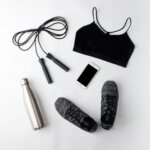
Shop Fitness gear now on Amazon
See Amazons extensive range of workout gear here. (Affiliate Link)
Scaling Options:
To gradually build strength and proficiency, consider the following scaling options:
- Lighter Weight: Begin with lighter weights or an empty barbell to master the form.
- Kettlebell Sumo Deadlift: Use a kettlebell instead of a barbell for a simpler variation.
- Block or Deficit Sumo Deadlift: Raise the bar on blocks to reduce the range of motion or stand on a platform to increase it, adjusting difficulty.
Common Mistakes to Avoid:
- Rounded Back: Maintain a neutral spine throughout the lift. Engage your core and keep your chest up.
- Hips Rising Too Fast: Ensure your hips and shoulders rise at the same pace to avoid unnecessary strain on your lower back.
- Incorrect Foot Placement: Keep your feet wide with toes pointed outwards to ensure proper form and prevent knee injuries.
- Barbell Drift: Keep the bar close to your body during the lift to maintain balance and proper mechanics..
Benefits of the Movement:
- Strength Development: Enhances overall lower body and back strength.
- Core Stability: Engages the core muscles, improving stability and balance.
- Versatility: Benefits both CrossFit and powerlifting athletes by providing a strong foundation for various lifts.
- Mobility Improvement: Encourages better hip and ankle mobility due to the wider stance.
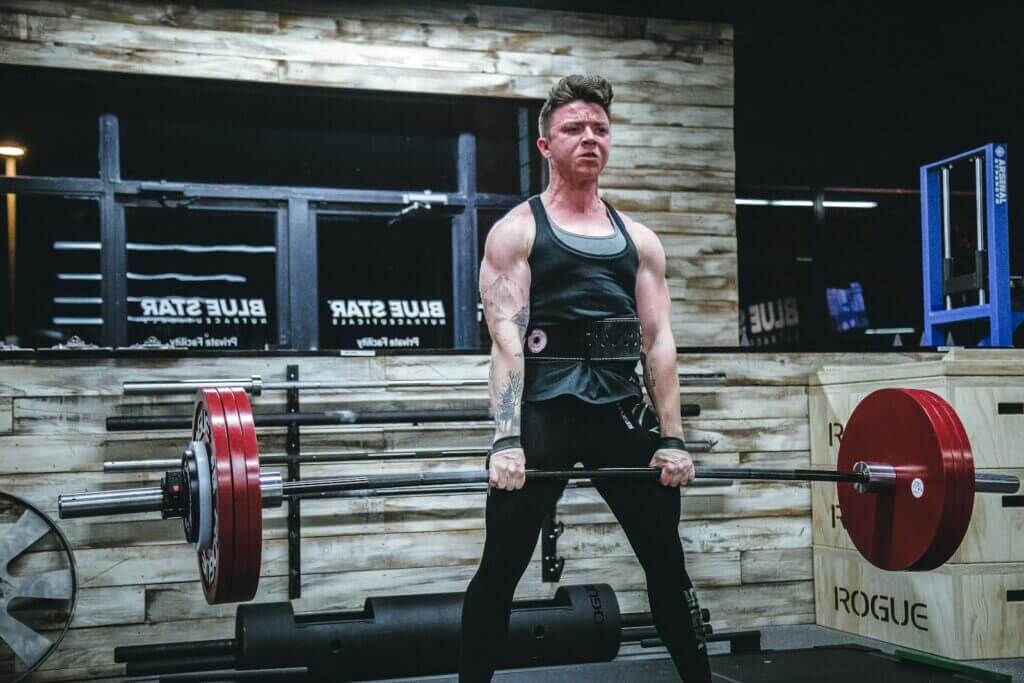
Which Muscles Are Worked:
During this exercise, the following muscle groups are engaged:
- Primary Muscles: Glutes, hamstrings, quadriceps, and adductors.
- Secondary Muscles: Lower back (erector spinae), upper back (trapezius), and core (abdominals and obliques).
Alternative Similar Movements:
If you’re seeking variation or targeting specific muscle groups, consider incorporating these alternative exercises:
- Traditional Deadlift: Similar to the sumo deadlift but with a narrower stance and different muscle emphasis.
- Romanian Deadlift: Focuses more on the hamstrings and glutes, with a slight knee bend.
- Trap Bar Deadlift: Utilizes a hexagonal bar, offering a different grip and stance, reducing lower back strain.
- Kettlebell Deadlift: Simplifies the movement, perfect for beginners or for varying your training routine.

Shop Fitness gear now on Amazon
See Amazons extensive range of workout gear here. (Affiliate Link)
Warm-Up and Mobility Exercises for Sumo Deadlift
Proper preparation is crucial for executing the sumo deadlift effectively and safely. Incorporating specific warm-up and mobility exercises can enhance performance and reduce the risk of injury. Begin with general cardiovascular activities, such as five minutes of light jogging or rowing, to increase blood flow and raise muscle temperature. Following this, focus on dynamic stretches targeting the hip adductors, hamstrings, and quadriceps to improve flexibility and range of motion. Exercises like leg swings, hip circles, and dynamic lunges are particularly beneficial. Additionally, incorporating mobility drills such as deep bodyweight squats and hip openers can further prepare the joints and muscles involved in the sumo deadlift. This dedicated warm-up routine not only primes the body for the demands of the lift but also reinforces proper movement patterns, contributing to more efficient and safer lifting sessions.
Breathing and Bracing Techniques
Mastering proper breathing and bracing techniques is essential for maintaining spinal stability and generating maximal power during the sumo deadlift. Begin by taking a deep diaphragmatic breath, expanding your abdomen outward rather than lifting your chest. This method increases intra-abdominal pressure, creating a natural “belt” that supports the spine. As you inhale, simultaneously contract your core muscles, imagining a 360-degree expansion around your midsection. Maintain this tension throughout the lift, exhaling only after completing the repetition and the barbell is securely back on the ground. Practicing this breathing and bracing sequence not only enhances performance by providing a stable base for force generation but also significantly reduces the risk of lower back injuries by preventing spinal flexion under load.
Programming the Sumo Deadlift into Your Routine
Effectively integrating the sumo deadlift into your training regimen requires careful consideration of your overall workout plan and fitness goals. For strength development, incorporate the sumo deadlift into your routine once or twice a week, ensuring adequate recovery between sessions. A typical approach might involve performing 3 to 5 sets of 3 to 5 repetitions at a challenging weight that allows for the maintenance of proper form. For hypertrophy goals, consider slightly higher repetitions, such as 3 to 4 sets of 6 to 8 reps, with a moderate weight. It’s also beneficial to vary the intensity and volume across training cycles, implementing periodization strategies to prevent plateaus and promote continuous progress. Additionally, complementing the sumo deadlift with accessory exercises like hip thrusts, hamstring curls, and core strengthening movements can address potential weaknesses and enhance overall performance. Always listen to your body and adjust the frequency and volume as needed to optimize results and minimize the risk of overtraining.
Addressing Plateaus and Advanced Variations
Experiencing plateaus in strength progression is a common challenge in resistance training, including the sumo deadlift. To overcome these stagnations, consider incorporating advanced variations and techniques into your routine. Implementing pause deadlifts, where you momentarily halt the movement at a specific point (e.g., just below the knees), can enhance strength at sticking points by increasing time under tension. Deficit sumo deadlifts, performed by standing on a small platform, increase the range of motion and demand greater force production, thereby promoting strength gains. Conversely, block pulls, which involve elevating the barbell on blocks, reduce the range of motion and allow for overload training, focusing on the lockout phase. Additionally, varying your training intensity through techniques like wave loading or incorporating accommodating resistance (e.g., bands or chains) can stimulate new adaptations. Regularly assessing and refining your technique, perhaps with the guidance of a coach or through video analysis, ensures that movement efficiency is maintained as loads increase. By strategically implementing these advanced strategies, you can break through plateaus and continue progressing in your sumo deadlift performance.

Shop Fitness gear now on Amazon
See Amazons extensive range of workout gear here. (Affiliate Link)
Q&A for Sumo deadlifts
How to do a sumo deadlift correctly?
To perform a sumo deadlift correctly, ensure your feet are wider than shoulder-width apart with toes pointed slightly outward. Keep your back straight, engage your core, and push through your heels as you lift the bar, keeping it close to your body.
What are sumo deadlifts good for?
Sumo deadlifts are excellent for targeting the glutes, hamstrings, and adductors while also reducing the strain on the lower back. They improve lower body strength and enhance hip mobility.
Why can’t I do sumo deadlift?
Inability to perform sumo deadlifts can stem from inadequate hip mobility, weak glutes or hamstrings, or improper form. Focus on mobility exercises and practice with lighter weights to build the necessary strength and technique.
Is sumo deadlift harder than deadlift?
The difficulty of sumo deadlifts versus conventional deadlifts varies based on individual strengths and biomechanics. Some find sumo deadlifts easier due to reduced range of motion, while others may struggle with the wide stance.
Is sumo deadlift less risky?
Sumo deadlifts are generally considered less risky for the lower back because they place less shear force on the spine. However, they still require proper technique to avoid injuries, especially to the hips and knees.
Why is sumo deadlift so popular?
Sumo deadlifts are popular because they allow lifters to leverage their strengths, particularly those with stronger legs and hips. The lift also reduces stress on the lower back, making it accessible to a wider range of athletes.
Should I lift sumo or conventional?
Choosing between sumo and conventional deadlifts depends on your body mechanics, goals, and comfort. Experiment with both styles to see which feels more natural and aligns better with your training objectives.
What is the hardest deadlift to do?
The hardest deadlift varies per individual, but many consider the deficit deadlift challenging because it increases the range of motion. Heavyweight lifters might also find the conventional deadlift more difficult due to the greater back involvement.
Is sumo deadlift better for the back?
Sumo deadlifts are generally better for the back because they reduce the range of motion and decrease shear forces on the spine. They engage the hips and legs more, which helps distribute the load away from the lower back.
Why are people against sumo deadlift?
Some people argue against sumo deadlifts because they feel it’s a “cheat” lift due to the reduced range of motion. However, it’s a legitimate lift in powerlifting and offers unique benefits that complement conventional deadlifts.
Why is sumo banned in strongman?
Sumo deadlifts are banned in strongman competitions to maintain the standard of the conventional deadlift and ensure a consistent measure of strength across all competitors.
Is sumo deadlift bad for the knees?
Sumo deadlifts are not inherently bad for the knees if performed with proper technique. Ensure your knees track over your toes and avoid letting them cave inward to prevent strain.
What is the heaviest deadlift ever recorded?
The heaviest deadlift ever recorded is 501 kg (1,104 lbs) by Hafthor Bjornsson in 2020. This lift was performed with a conventional stance, showcasing immense strength.
Is there a benefit to sumo deadlift?
Yes, sumo deadlifts offer numerous benefits, including enhanced lower body strength, reduced lower back strain, and improved hip mobility. They provide a valuable variation to conventional deadlifts, promoting balanced development.
Is sumo deadlift fair?
Sumo deadlifts are fair and widely accepted in powerlifting competitions, provided they meet the standard rules. They are a legitimate lift that emphasizes different muscle groups compared to conventional deadlifts.
Is a 100kg deadlift good?
A 100kg deadlift is a commendable achievement, particularly for beginners or lighter weight lifters. It demonstrates a solid foundation of strength and proper technique.
What is Arnold Schwarzenegger’s heaviest deadlift?
Arnold Schwarzenegger’s heaviest deadlift is reported to be around 310 kg (683 lbs), showcasing his incredible strength during his competitive bodybuilding and powerlifting days.
Is a 200 kg deadlift impressive?
A 200 kg deadlift is highly impressive, indicating significant strength and dedication to training. It’s a notable milestone for intermediate and advanced lifters.
Is sumo deadlift pointless?
Sumo deadlifts are far from pointless. They offer unique benefits, including improved hip and leg strength, reduced lower back strain, and enhanced performance in various athletic disciplines.
What body type is best for sumo deadlift?
Lifters with longer torsos and shorter limbs often excel at sumo deadlifts due to the reduced range of motion and favorable leverage. However, anyone can benefit from incorporating sumo deadlifts into their routine.
Does Eddie Hall sumo deadlift?
Eddie Hall, known for his world-record conventional deadlift, primarily focuses on traditional deadlifts. He has not been known to specialize in sumo deadlifts, preferring the conventional stance for his lifts.
Conclusion:
Incorporating the sumo deadlift into your workout routine can significantly enhance your strength, power, and overall fitness. Whether you’re a beginner or an intermediate athlete, mastering this exercise will provide a solid foundation for your CrossFit and gym training journey. So, grab that barbell, perfect your form, and start lifting!

Shop Fitness gear now on Amazon
See Amazons extensive range of workout gear here. (Affiliate Link)

🏋️ Written by: Mike Kerr
Mike is the founder of Strengthguides.com and a certified CrossFit Level 1 Trainer (CF-L1) and certified Kettlebell Instructor with over 10 years of experience in functional fitness. He specializes in developing programs that maximize performance without sacrificing mobility. Mike Kerr is passionate about making complex training methodologies comprehensible and safe for everyone.

